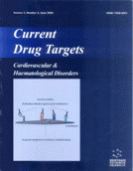Abstract
L-Mevalonic acid is the distant precursor of cholesterol, in contrast to cholesterol, L -mevalonic acid, its distant precursor gives rise to farnesyl and geranylgeranyl pyrophosphates in relatively few metabolic steps. These isoprenyl pyrophophates covalently conjugate with specific G-proteins and serve as membrane anchors enabling them to carry out their function. Although farnesyl-proteins may participate in signal transduction, geranylgeranyl-proteins (e.g., Rho GTP binding proteins) are well known to downregulate signaling pathways by inhibiting L -mevalonic acid synthesis. Such inhibitors include 3-hydroxy-3-methylglutaryl CoA reductase inhibitors, drugs (statins) and isoprenoids of dietary origins, where Rho protein activation appears to be necessary for cellular-mediated thrombin generation. Thrombin and other proteases (e.g., coagulation factor Xa, tryptase) upregulate protease-activated receptor (PAR) synthesis and PAR activation promotes synthesis and expression of other proteins [e.g., tissue factor (TF) and plasminogen activator inhibitor-1 (PAI-1)]. With the PAR-1 activating peptide SSFLRNP, we found that either cerivastatin or atorvastatin mitigated platelet stimulation in a time- and dose-dependent manner, as predicted if a statinmediated Rho pathway is required. We also found that simvastatin decreased prothrombin fragments F1+2 in plasma from type 2 diabetics, demonstrating that statins downregulate thrombin generation. Thus, independent of cholesterol, statins and dietary isoprenoids behave as inhibitors of TF-dependent thrombin generation. Because thrombin has multiple physiological functions, the 20 pleiotropic effects reported for statins may reflect a common mechanism for downregulation of thrombin-mediated events, in particular at the cellular level.
Keywords: Thrombin, farnesyl-proteins, TF-dependent, cholesterol, peptide SSFLRNP
 3
3













